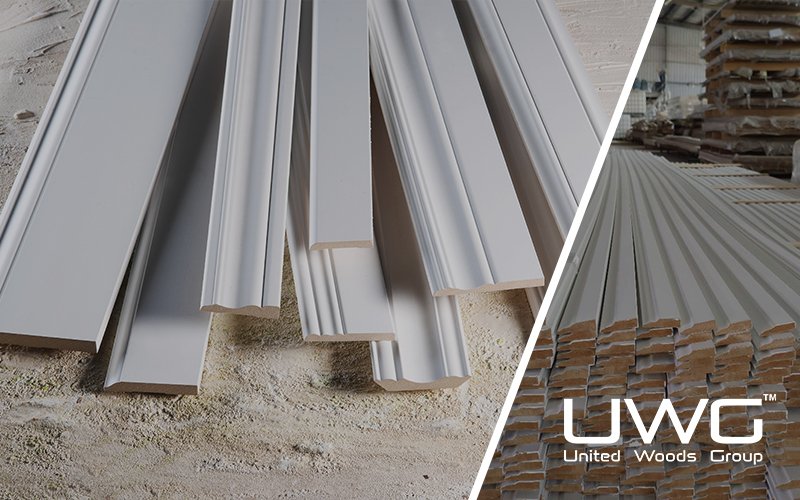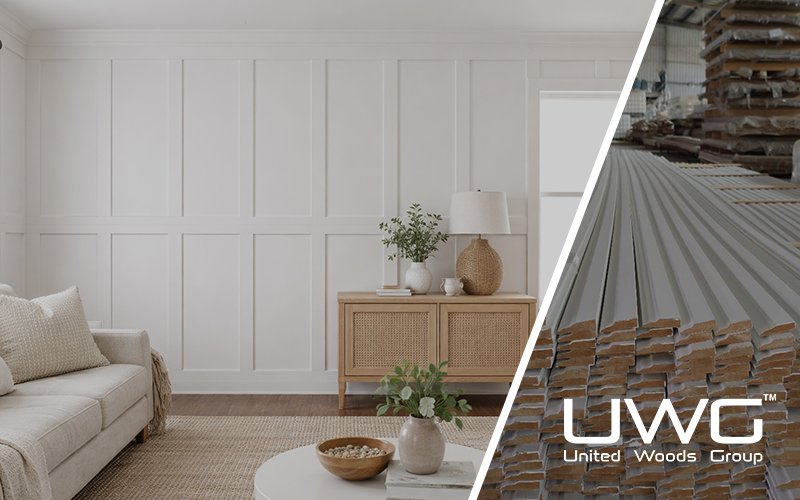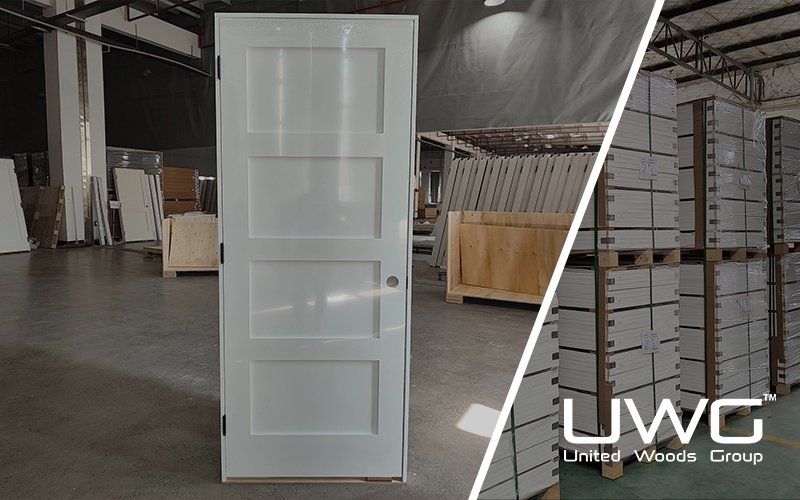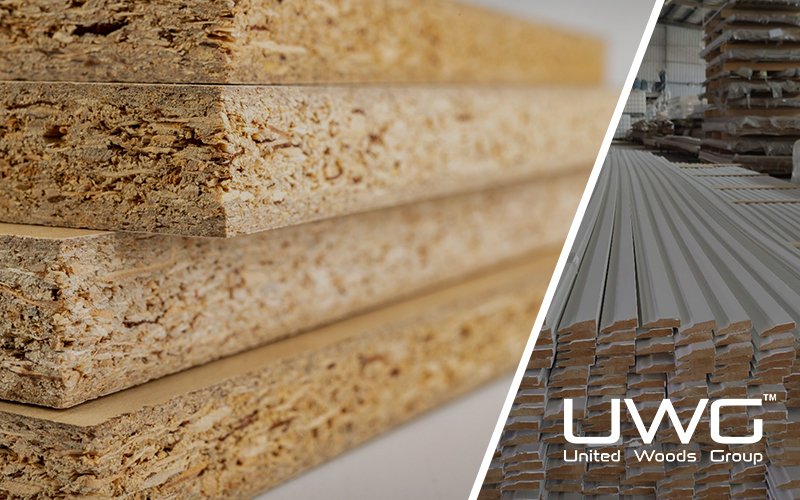In today’s construction market, every dollar counts. Rising material costs, volatile supply chains, and increasing competition are squeezing builder margins like never before. While cutting corners on quality can damage reputation and delay projects, smarter procurement strategies can deliver significant savings without compromise. One of the most effective ways to achieve this is by going factory-direct – eliminating middlemen, reducing markups, and gaining better control over quality and timelines.
Legacy chains stack margins (importer/distributor → regional → retail). Factory-direct removes layers and compresses logistics, financing, and handling costs. For North American door programs (molded, Shaker engineered, pre-hung), builders typically unlock 20%–40% total procurement savings; versus local retail benchmarks the gap can be even larger.
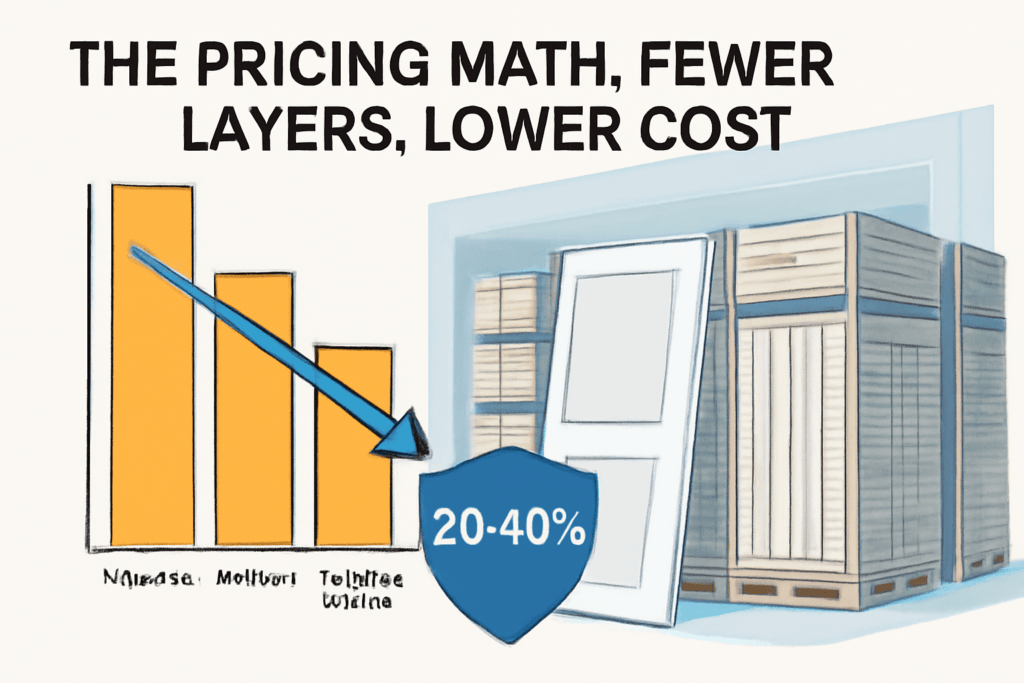
Look Beyond Unit Price: Optimize Total Cost of Ownership (TCO)
- Quality stability: higher yield, fewer reworks.
- Fit-for-transit packaging: engineered for long-haul trucking and drayage, cutting damage/claims.
- Predictable supply: production-slot visibility reduces site idle time.
- Cash-flow efficiency: phase shipping by project rhythm to lower on-hand inventory.
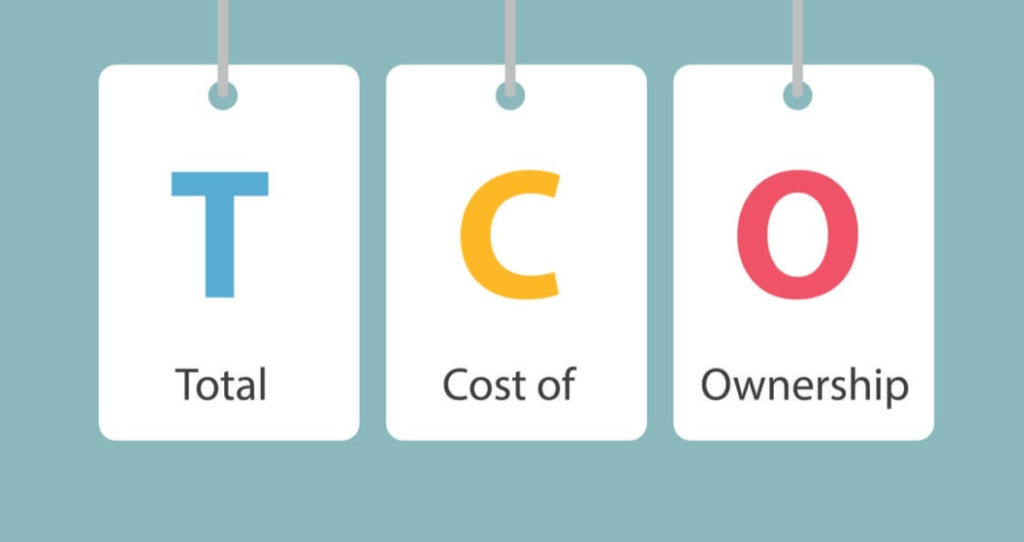
Lead Time & Predictability: From “Estimate” to a Real Build Plan
Direct links to the line convert dates into a weekly Gantt (pressing—painting—pre-hanging—stuffing), so your site schedule isn’t gambling on guesswork.
Quality & Compliance at the Source
- Materials & moisture: pine/FJ frames, MDF panels at 8%–12% MC for dry climates.
- Regulatory docs: CARB/EPA TSCA Title VI support and lot traceability.
- Consistency: same recipe, same line, same jigs—fewer color/fit variances.

Risk Control: Design Out the Failure Modes
- Humidity/long-haul rain: moisture barriers, edge sealing, corner guards, pallet templates, and void-filling.
- High-value items: prehung doors to the jobsite to cut install errors/time.
- Claims: structured compensation for verified transit damage (including DDP components).

When Factory-Direct May Not Beat Local
- Very small, highly fragmented volumes;
- Next-day must-arrive replenishment;
- Locally bundled warehousing/service contracts. Workaround: run a small, 60–90 day pilot on high-frequency SKUs to produce real damage, utilization, and labor data—then scale.
Pilot Roadmap (Pragmatic)
- Day 1–30: lock 3–5 core SKUs (e.g., 2/4/6-Panel molded; Shaker 1/2/3-Lite). Approve samples, verify hardware compatibility.
- Day 31–60: ship a mixed 40HQ (prehung + slabs + bifold/pocket/barn kits) to validate cube utilization and damage rate.
- Day 61–90: migrate high-frequency models to direct; keep long-tail locally.
What United Woods Group Brings
- Capacity & pedigree: Three dedicated plants in Fujian, Zhejiang, and Vietnam, focused on interior doors and mouldings; long-term supply to major North American wholesalers and big-box channels (e.g., Home Depot, Menards).
- One-stop portfolio: doors, mouldings, cabinets, flooring, wall panels—mix all in one container; full prehung, pocket, bifold, and barn systems.
- Engineered containerization: project-based mix plans to maximize CBM and site fit.
- Stable quality: standardized priming/finishing, edge sealing, impact protection; controlled MC to reduce warp/crack.
- Delivery & service: DDP-to-door options, structured damage compensation, and install guidance.
- Low-MOQ friendly: start small, prove the model, then scale—de-risking your transition.

Expected Wins (From Real Programs)
- Procurement: fewer stacked margins and lower logistics/finance compounding.
- Site operations: prehung saves install labor and shortens turnover.
- Finance: phased shipments and mixing reduce inventory capital and obsolescence.
Your Next Step
Provide your top SKUs, project timeline, and delivery location, and we’ll deliver a tailored mixed-container plan with landed cost analysis and side-by-side TCO comparison. See exactly how factory-direct procurement can reduce costs, improve quality, and streamline your project—before you commit.



